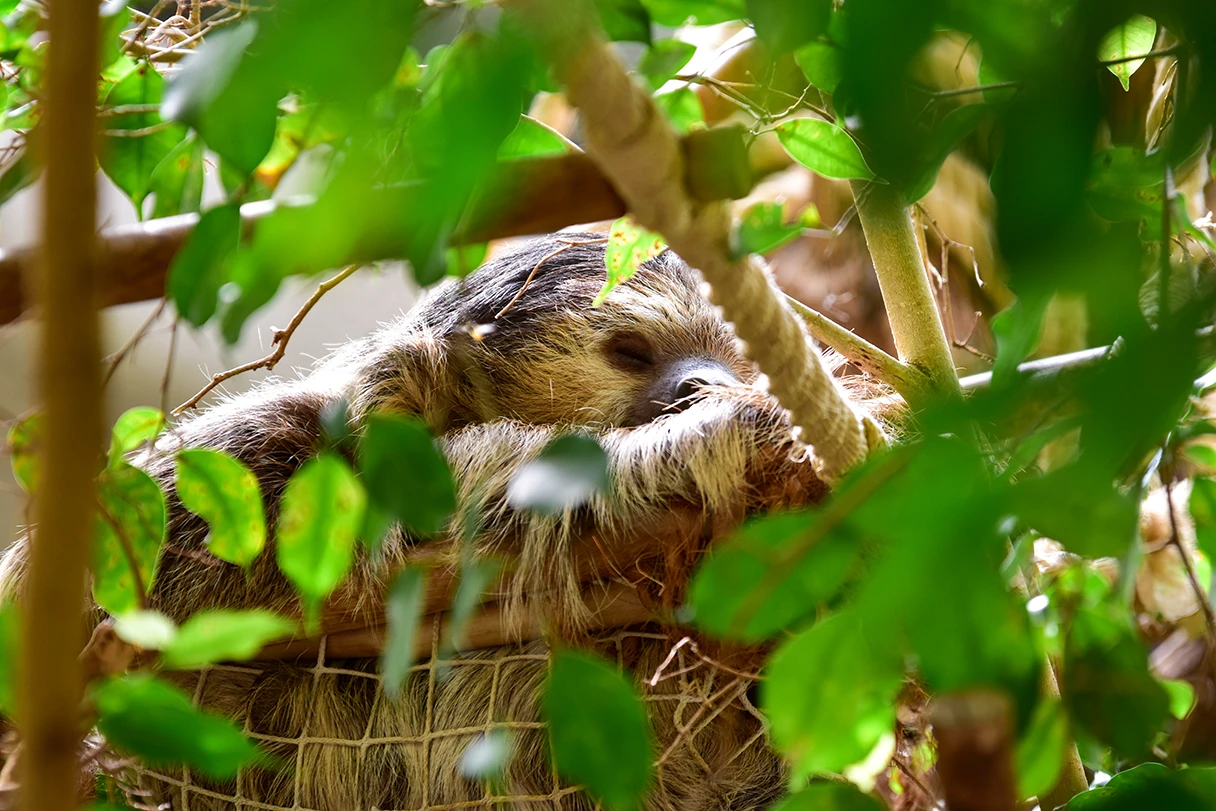 Photo: Stefanie Jost
Photo: Stefanie Jost
Our animal sponsorship at the Munich Zoo Hellabrunn
Sloths are known for two things above all: Doing nothing and if they do, then only slowly. Nevertheless, they are very interesting and also funny animals.
CityTourCard Munich is the proud sponsor of the two-fingered sloth at Hellabrunn Zoo! 🦥 In this article, you'll learn which animal sleeps even more and other facts about sloths.
Natural habitat of the sloth
Sloths are at home in the rainforests of Central and South America. They can be distinguished into two-fingered and three-fingered sloths, but both species have long claws to hang on the branches all day without any problems. The three-fingered sloths are up to 50 cm tall and weigh about 5 kg smaller than the two-fingered sloths up to 75 cm tall and 9 kg weight.
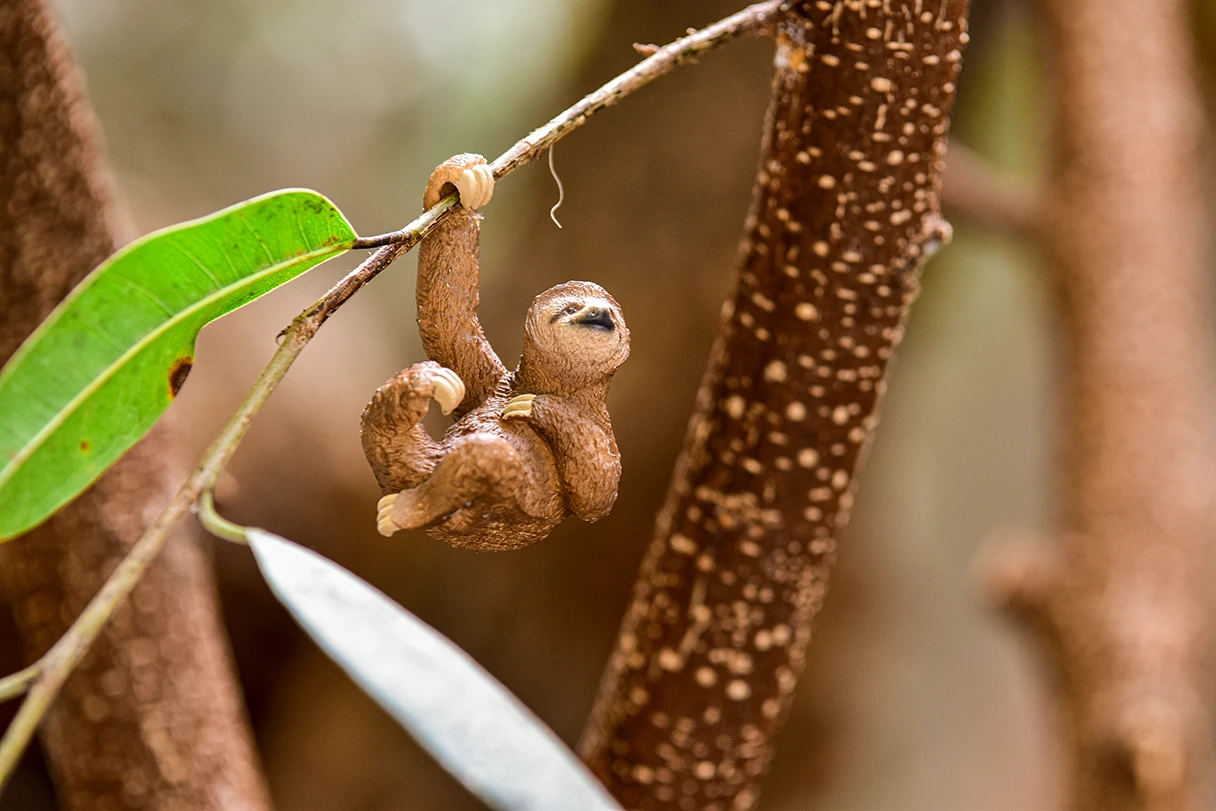 Photo: Stefanie Jost
Photo: Stefanie Jost
Daily routine of a sloth
Their daytime activities consist of hanging from the tree with their backs down and eating some leaves and buds here and there. That leaves time for about 16 hours of sleep. But that doesn't make them the biggest long sleepers in the animal world: koalas and bats sleep up to 20 hours a day.
The light and low-calorie diet of the sloths ensures that they can not move much more or faster. They don't really need to, because their bodies are perfectly adapted to this lifestyle.
They are very limber and can turn their heads 270 degrees, which makes it easier to feed them with little effort. In addition, their brown fur, on which green algae grows, camouflages them well among the trees from predators.
It becomes dangerous for sloths when they leave the tree once a week to go to the toilet. There they are easily attacked and not able to flee quickly.
 Photo: Stefanie Jost
Photo: Stefanie Jost
Sloths and antibiotics
One fun fact you most likely didn't know about these unique animals is that their fur contains microorganisms that are used to make antibiotics. Despite their "lazy" existence, they are also useful animals.
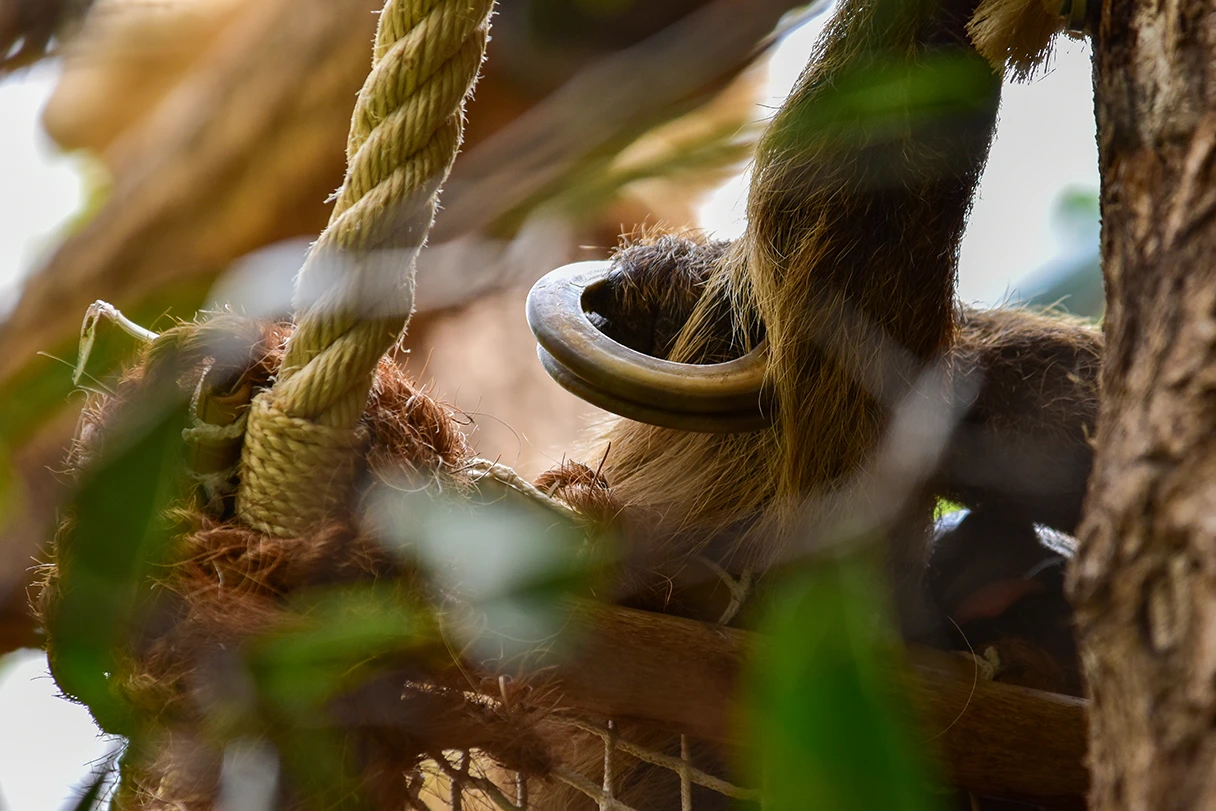 Photo: Stefanie Jost
Photo: Stefanie Jost
Sloths in the zoo Hellabrunn
In Munich's Hellabrunn Zoo, you can visit the two-fingered sloth. Over 500 animal species live here and can be observed. The zoo is also strongly committed to species conservation and is involved in public relations and educational work, participates in important research projects, and preserves endangered species. This includes the European Conservation Program (EEP), which Hellabrunn coordinates itself and maintains the International Studbook (ISB) for an endangered monkey species for this purpose.
The zoo is always happy to receive donations and new sponsors to help promote species conservation.
-
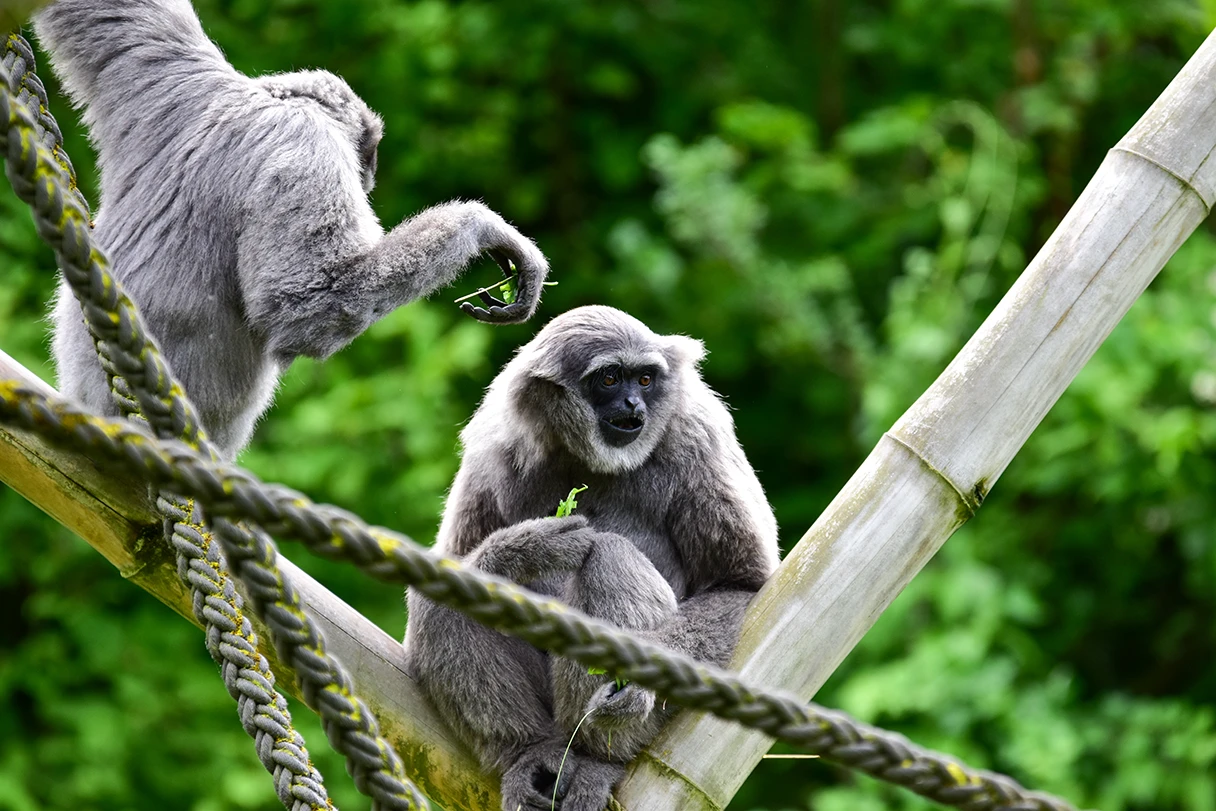 Photo: Stefanie Jost
Photo: Stefanie Jost
-
 Photo: Stefanie Jost
Photo: Stefanie Jost
-
 Photo: Stefanie Jost
Photo: Stefanie Jost
-
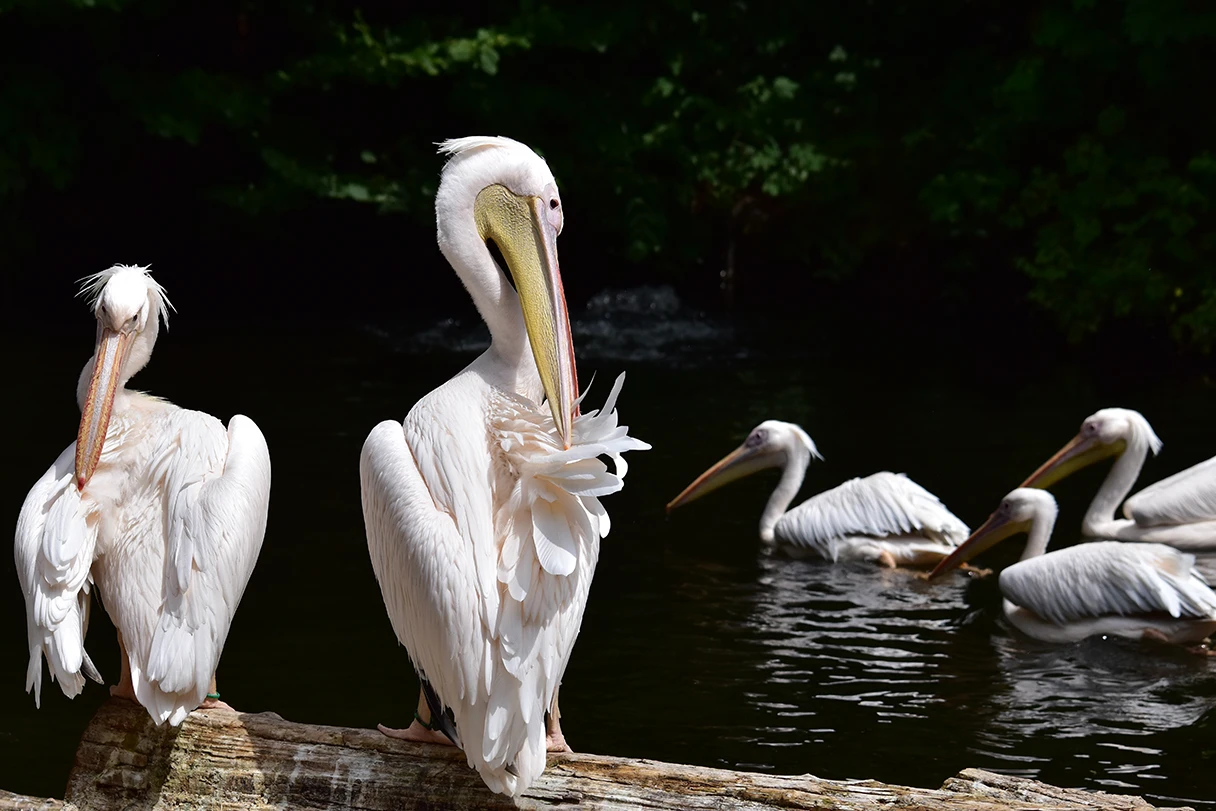 Photo: Stefanie Jost
Photo: Stefanie Jost
If you're at the zoo yourself and visiting the sloths, upload your photos and videos to Instagram, tag us (@citytourcardmuc) and use our hashtag #easygoingmunich to repost on our Story!
